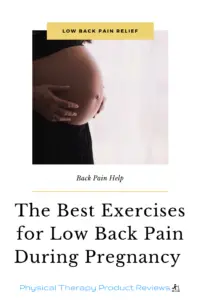The Best Exercises Postpartum
“I’ve delivered the baby, how soon can I resume working out?”
It’s a common question, especially if you were fit prior to pregnancy and worked out during your pregnancy. Returning to exercises postpartum is great for the new mom who wants to regain their fitness, relieve stress, or just have alone time. Whatever the reason for wanting to start working out again, there are many factors to consider before starting back up again, and you should consult with your doctor prior to resuming exercise after baby as there are many factors to take into consideration: complications from birth, type of delivery, and how you, as the new mom, feel are some of the variables.

Is it Safe to Exercise Postpartum?
Yes, it is safe to exercise postpartum, but as stated above, there are some factors to consider. According to the ACOG FAQ sheet on exercising after pregnancy, if you had a healthy pregnancy and a normal vaginal delivery, you should be able to resume exercise soon after the baby is born, as soon as a few days, or as soon as you feel ready to. If you have had any complications during delivery or had a cesarean, you should consult with your doctor about when it is safe to resume exercise. Some of the benefits of exercising after delivery are a boost in energy, may help with postpartum depression, may help with sleep, and is a way to relieve stress.
Are you having back pain after pregnancy? It might be time to chance your mattress. Check out the best mattress for low back pain
When Can I Exercise Postpartum?
Many doctors will tell you to wait until your 6- or 8-week checkup before resuming exercise, but light exercise, such as walking, most women feel well enough to do prior to their follow-up visit. However, it is imperative that you listen to your body because no two pregnancies, deliveries, or new moms are the same after the baby arrives. Doing too much before you are physically ready can result in injury or hinder your body’s recovery.
Important Tips for Postpartum Exercise
When you feel ready to resume exercise, it’s best to start slow and perform simple exercises that aren’t overly taxing on your body but will help to strengthen the major muscle groups. Begin with aiming to be active 20-30 minutes a day and for resistance training, start with simple postpartum exercises that target the major muscle groups, including the abdominal and back muscles. Remember, your abs and your lower back had a lot of stress and strain on them during your pregnancy and you need to gradually increase their strength to reduce risk of injury.
If you are breastfeeding and/or pumping, there’s still information floating around that working out will “sour” your breast milk and is harmful to your baby. This is false information! According to Mary Bibb, BA, IBCLC in an article that she wrote for Medela, exercising will not “ruin” your milk and will not affect your milk supply, so you don’t need to worry about that. Many moms will breastfeed or pump prior to exercising as it can become uncomfortable to workout will full breasts and a supportive bra will help minimize the discomfort.
Something to also consider is how significant abdominal separation is (aka diastasis recti) as it’s very common and a high percentage of women develop it during pregnancy. Two studies have found that between 60% and 100% of women have it immediately following delivery, 39% have it at 6 months postpartum and 32.6% have it at 12 months postpartum. With having abdominal separation, there are exercises that will impact your DR closing or could increase the severity of it.
It’s important to remember that your body just did an amazing feat in growing and bringing a new person into this world. Your body will not be the same as it was prior to pregnancy, but it is possible to get back to participating in many pre-pregnancy activities in time. Your body will need time to heal and readjust to its new normal so that you don’t risk injuring yourself.
How to Measure Diastasis Recti
Are you Pregnant and have low back pain?
You don’t have to! Check out our post on the best exercises for low back pain during pregnancy
The Best Exercises Postpartum
Kegals
A proper pelvic floor contraction feels like a lift and a squeeze in the anus and vagina.
*First technique in the video starts at 1:17*
- Lay on your side, place a pillow between your knees.
- Place your first or second finger on the perineum.
- Lift and squeeze the muscles to draw up through your vagina.
- You should feel the perineum lift away from your finger slightly.
- The thighs and buttocks should remain relaxed and breathe normally.
Hip Bridge with Pelvic Tilt
- Lay on the floor with your knees bent, feet flat.
- Tilt your pelvis backward to press and flatten your lower back into the floor.
- While holding the tilt, press down through the heels and lift the hips up.
- Slowly return hips to floor, release the tilt.
Abdominal Bracing with Heel Slides
- Lay on your back, knees bent, feet flat on the floor.
- Draw the pelvic floor muscles up then slowly slide your right heel away from you
- Only extend the leg as far as you can without losing position of pelvis and pelvic floor contraction.
- While maintaining position, slowly slide the right heel towards you to return to your starting position.
- Repeat the motion on the left side.
- Variation: for a smoother slide, place a paper plate or slide disc under the heel. This will allow you to increase the pressure through your heel for a deeper core contraction.
Modified Side Plank
- Laying on your side and place your elbow directly underneath your shoulder, hand flat on the floor.
- Bend your bottom knee so it is directly in line with your shoulder and hip, then extend your top leg so that your ankle is in line with your hip and shoulder as well.
- Pressing your elbow, knee, and foot into the floor, lift your hip up.
- Variations: stack bent knees on top of each other; raise hip and hold
Side Lying Clamshell
- Laying on your side with your arm supporting your head.
- Bend your knees and make sure your heels, hips, and shoulders are aligned.
- Place your top hand on your pelvis to make sure your hips don’t rotate.
- Put a mini loop resistance band around the knees to make it harder
- Pressing your feet together, lift the knee up to feel the glute contract then lower to your starting position.
- Make sure to repeat on opposite side.
The Exercises that You Should Avoid Postpartum
There are quite a number of exercises that should be avoided post-delivery as they increase the amount of pressure and strain on the abdominal wall and can further increase the separation size between the muscles. Some of the exercises that should be avoided include:
- crunches/sit-ups
- incline sit-ups
- abdominal exercise machines
- oblique sit-ups/machine
- exercise ball sit-ups/ball leg raises
- bicycle legs
- double leg raise
- hanging knee raise
- and plank exercises
This is not a comprehensive list, but you should avoid any intense abdominal or core exercises until your diastasis recti has healed to within a normal range of separation.
Disclaimer
Please consult your physician before beginning any new exercise program, especially postpartum. This is for informational purposes only.
Find a Pelvic Floor Specialist:
Section on Women’s Health, PT Locator: https://ptl.womenshealthapta.org/#s=1
Pelvic Rehab: https://pelvicrehab.com/
Pelvic Guru: https://pelvicguru.com/
Works Cited:
Exercise After Baby: Getting Back in the Exercise Saddle
https://www.whattoexpect.com/first-year/week-3/exercise-saddle.aspx
Women’s Health Care Physicians
https://www.acog.org/Patients/FAQs/Exercise-After-Pregnancy?IsMobileSet=false
Medela Supports You with Breast Pumps, Breast Milk Feeding Products and Breastfeeding Education
Medela – https://www.medelabreastfeedingus.com/tips-and-solutions/45/exercise-and-breastfeeding
Diastasis Recti Abdominis During Pregnancy and 12 Months After Childbirth: Prevalence, Risk Factors and Report Of Lumbopelvic Pain
Jorun Sperstad-Merete Tennfjord-Gunvor Hilde-Marie Ellström-Engh-Kari Bø – https://www.ncbi.nlm.nih.gov/pubmed/27324871
Prevalence and Risk Factors Of Diastasis Recti Abdominis from Late Pregnancy To 6 Months Postpartum, and Relationship with Lumbo-pelvic Pain
Patrícia Fernandes da Mota-Augusto Pascoal-Ana Carita-Kari Bø – https://www.ncbi.nlm.nih.gov/pubmed/25282439
Diastasis Recti Exercises That Help & What To Avoid
FitnessBlender – https://www.fitnessblender.com/articles/diastasis-recti-exercises-that-help-and-what-to-avoid
Disclaimer: The information provided in this post is for educational purposes only. This is not a substitute for a medical appointment. Please refer to your physician before starting any exercise program.


